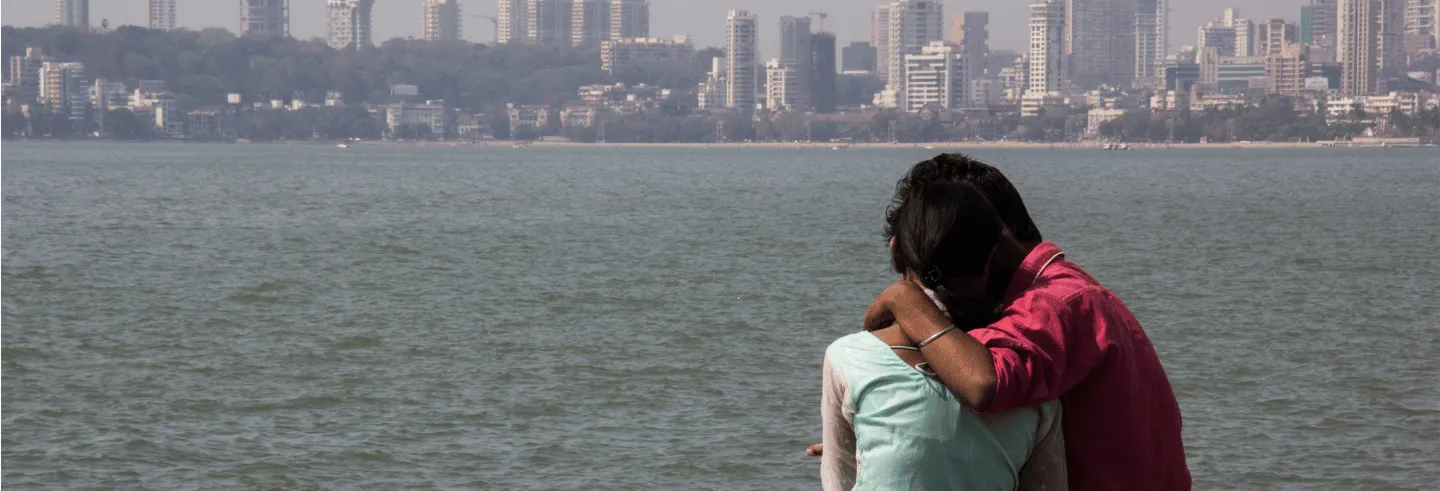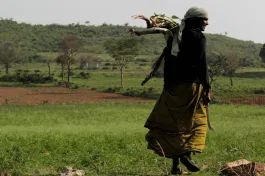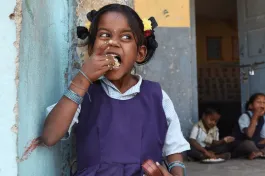In its written submissions to the Supreme Court in a public interest litigation (PIL) aimed at making the justice system more effective in dealing with sexual offences, the union government recently opposed lowering the statutory “age of consent” from 18 years. It also objected to Amicus Curiae Indira Jaising’s suggestion to exempt “consensual sexual activity” between adolescents aged 16 to 18 from the scope of the Protection of Children from Sexual Offences Act (POCSO Act), 2012 and related criminal law provisions.
Legal Framework
The age of consent, in this context, refers to the legally defined age at which an individual can consent to sexual activity. In India, it is now 18 years, as established by the gender-neutral POCSO Act, 2012. Anyone below this age is classified as a “child”, making their consent to sexual acts legally irrelevant. Consequently, sexual acts with minors are treated as “statutory rape”, based on the legal presumption that children lack the capacity to give valid consent. Notably, Section 19 of the POCSO Act mandates that any person who suspects or has knowledge of an offence under the Act, whether likely to occur or already committed, must report it to the local police or the Special Juvenile Police Unit.
Advocates for lowering the age of consent argue that the law fails to recognise adolescent sexuality, infringing on the autonomy of 16–18-year-olds capable of giving mature consent.
The 18-year threshold was firmly cemented in the broader criminal law framework by the Criminal Law (Amendment) Act, 2013. This Act notably amended, among others, Section 375 of the Indian Penal Code (IPC), which defines “rape” and, until 2012, had set the age of consent at 16 years. The amendments, aimed at strengthening laws related to sexual offences against women, specifically aligned the IPC’s Section 375 with the 18-year age limit stipulated in the POCSO Act, thereby ensuring comprehensive protection against “child sexual abuse”. The Bharatiya Nyaya Sanhita (BNS), 2023 retained this position—Section 63 defines rape to include sexual acts with or without consent if the woman is under 18.
Historically, India’s age of consent has evolved significantly—from 10 years under the IPC 1860, drafted by Lord Thomas Babington Macaulay, to 12 (Age of Consent Act, 1891), 14 (IPC amendment, 1925), and subsequently 16 from 1949 until the POCSO Act raised it to 18 in 2012. Importantly, the age of consent is distinct from the “minimum age of marriage”, which under the Prohibition of Child Marriage Act, 2006 is 18 for females and 21 for males. A 2021 Amendment Bill, proposing to raise the minimum age for females to 21 to ensure gender parity, was introduced, but has not yet been passed into law.
Arguments in Favour
In recent years, the debate over the age of consent has intensified, particularly due to a surge in POCSO cases involving adolescents aged 16–18, where the girl often testifies to “consensual sex”. Advocates for lowering the age of consent argue that the law fails to recognise adolescent sexuality, infringing on the autonomy of 16–18-year-olds capable of giving mature consent. Underscoring the POCSO Act’s intent, they emphasise that it was designed to prevent “child sexual abuse”, not to criminalise non-exploitative consensual romantic relationships among older adolescents.
Reflecting the ground realities of “adolescent sexual behaviour”, the fourth round of the National Family Health Survey (NFHS-4; 2015–16) shows that 11% of girls had their first sexual experience before age 15, and 39% before 18. An Enfold study analysing 7,064 POCSO judgments (2016–2020) across Assam, Maharashtra, and West Bengal found that 24.3% involved romantic relationships, with 82% of victims in such cases refusing to testify against the accused (Shruthi and Raha 2022). Another Enfold–Project 39A study (2024) of 264 cases under Section 6 (aggravated penetrative sexual assault) of the POCSO Act in the same states found 25.4% involved consensual relationships.
Individuals against reducing the consent age acknowledge that courts may exercise “guided judicial discretion” in isolated cases involving consensual adolescent relationships, but they caution against codifying such exceptions in law.
Citing these datasets, many advocate for a more nuanced legal approach, one that respects the consent of those over 16 while ensuring safeguards against coercion, exploitation, or abuse of authority. In a digitally mediated world of adolescent love and vulnerability, they call for shifting the conversation towards informed, open dialogue around sex education, relationships, and consent, rather than blanket criminalisation, which often leads to misuse. As portrayed in the Telugu movie “Court – State vs A Nobody” (2025), it is not uncommon for a girl’s family to get slightly older boys booked under the POCSO Act, even when the relationship is “consensual”.
In many Western democracies, the age of consent is 16, with safeguards against coercion and abuse. Countries like the UK, Canada, and several European Union (EU) nations recognise “close-in-age” exemptions, ensuring teenagers in “consensual relationships” with slightly older peers are not criminalised. These frameworks focus on preventing exploitation where power imbalances exist, not penalising relationships marked by mutuality and age parity.
There are Concerns
However, there are genuine concerns on reducing the “consent age”. Such a move would risk weakening the deterrent framework, enabling trafficking and other forms of child abuse under the guise of consent. The current “bright-line rule”, which treats all individuals under 18 as incapable of consenting to sexual activity reflects a clear legislative intent to create an unambiguous zone of protection for minors under the POCSO Act and BNS.
This rule avoids subjective judgments by replacing them with an objective, consistent standard. Individuals against reducing the consent age acknowledge that courts may exercise “guided judicial discretion” in isolated cases involving consensual adolescent relationships, but they caution against codifying such exceptions in law.
Even more concerning is that child exploitation often takes place at the hands of individuals in positions of trust—such as family members, neighbours, teachers, and caregivers. According to a 2007 study by the Ministry of Women and Child Development, over half of those who abused children were people the child already knew. 1In the Ministry’s report, see under the heading “major finding” in the preface, Page no. vii. In such cases, children often lack the emotional independence or capacity to resist or report abuse, making any claim of consent meaningless. Diluting the law would legitimise coercion, suppress disclosures, and contradict the constitutional and statutory commitment to protecting children’s best interests.
Time and again, courts have faced the tough task of upholding the letter of the law while recognising that its application, in some cases, can inflict real harm on those it seeks to protect.
Some concerns about lowering the age would risk encouraging younger children to engage in sexual activity prematurely, without the emotional maturity to comprehend its ramifications. Neurologically, the prefrontal cortex, responsible for reasoning, decision-making and impulse control, is not fully developed until the early 20s.
It is noteworthy that the Parliament has consistently rejected proposals to lower the age of consent. The Justice Verma Committee had recommended keeping it at 16 under the IPC Section 375, but Parliament chose to raise it to 18 in 2013, aligning with the POCSO framework. The 240th Report of the Parliamentary Standing Committee on Human Resource Development (2011) rejected recognising minor consent in the POCSO Bill, stating that willingness or maturity was legally irrelevant.
Similarly, the 167th Report of the Parliamentary Standing Committee on Home Affairs (2012) supported raising the age to 18 and opposed any “close-in-age” exemption. Most recently, the Law Commission’s Report 283rd (2023) on the age of consent warned that reducing it would render the POCSO Act a “paper law”, undermining efforts to combat child marriage, prostitution, and trafficking.
What the Courts Have Said
Time and again, courts have faced the tough task of upholding the letter of the law while recognising that its application, in some cases, can inflict real harm on those it seeks to protect. Therefore, while upholding the law, judges often resort to compassionate exceptions —granting bail, quashing first information reports (FIRs) and pending criminal proceedings, or discretionary sentencing.
In State v. Hitesh (2025), the Delhi High Court, through a rights-based lens, held that “societal and legal views on adolescent love should emphasise the rights of young individuals to engage in romantic relationships that are free from exploitation and abuse. Love is a fundamental human experience, and adolescents have the right to form emotional connections. The law should evolve to acknowledge and respect these relationships, as long as they are consensual and free from coercion.”
Similarly, the Bombay High Court in Ashik Ramjaii Ansari v. State of Maharashtra (2023) held that sexual autonomy includes both the “right to engage” in consensual activity and the “right to protection” from sexual aggression, and that recognising both is key to respecting human sexual dignity.
For real impact, we need a holistic approach that includes access to comprehensive, stigma-free sexuality education. Girls must be empowered and independent, and young people’s autonomy should be respected.
However, judicial views remain inconsistent. In Mohd. Rafayat Ali v. State of Delhi, the Delhi High Court in its order in February 2025 asserted that “consent is legally immaterial” under the POCSO Act—if the victim is under 18, the law presumes incapacity to consent. Most notably, on 20 August 2024, the Supreme Court overturned a controversial Calcutta High Court ruling that acquitted a man in a POCSO case involving a 14-year-old girl, reaffirming that the law does not recognise “consensual sex” with minors. Yet, later invoking Article 142 (extraordinary jurisdiction), the apex court declined to impose a sentence despite conviction, noting that the girl did not view the incident as a crime and had suffered more from the legal process than the act itself, but it also stated that the judgment should not be treated as precedent.
More recently, on 19 August 2025, in a hearing of a case at the Supreme Court, Justice B.V. Nagarathna observed that romantic relationships between persons on the verge of majority age should be seen differently. “There is the POCSO Act, which takes care of the penal cases, but there are romantic cases also where teenagers on the verge of majority run away, where there are genuine romantic cases, they want to get married, don’t read such cases the same as criminal cases. We have to differentiate between criminal cases and this.” She added, “Look at the trauma the girl undergoes if she loves a boy and he is sent to jail because her parents would file a POCSO case to cover the elopement.”
What Should Be Done?
While reducing the age of consent is within the jurisdiction of Parliament, the Supreme Court must step in to clarify the growing interpretational divide between the statutory framework and high court rulings, ensuring consistency for investigating agencies and lower courts alike. Moreover, laws alone cannot address the layered and complex realities of adolescent life, as shown in the popular Netflix miniseries “Adolescence”, where the 13-year-old protagonist, Jamie, navigates a critical stage of life without supervision or emotional support.
For real impact, we need a holistic approach that includes access to comprehensive, stigma-free sexuality education. Girls must be empowered and independent, and young people’s autonomy should be respected. We also need accessible sexual and reproductive health services, gender-sensitive and responsive law enforcement, and—above all—a social ecosystem that supports, rather than shuns, adolescents, especially girls, when they find themselves at odds with their families.
While I fully respect and understand the protective intent behind keeping India’s age of consent at 18—it shields vulnerable kids from exploitation in a society riddled with power imbalances and hidden abuses—I have seen too many cases where it backfires on teens in genuine, mutual relationships, turning love into a legal nightmare that scars families and futures alike. Data from studies like Enfold’s paints a clear picture—many cases arise from consensual romantic relationships. Often, these cases are pursued by disapproving parents, which clogs the courts and erodes trust in the system. Meanwhile, the real issues—such as inadequate sex education and cultural taboos around dating—remain unaddressed.
Instead of a blanket reduction that could open doors to predators disguising coercion as consent, especially given how the brain’s decision-making wiring is not fully online until the 20s, we need a pragmatic tweak.
In my view, the real challenge is not whether the age of consent should mechanically remain 18 or fall to 16, but how the law can be recalibrated to distinguish genuine adolescent relationships from exploitative ones. A wholesale reduction risks diluting child protection, yet the current blanket rule unjustly criminalises young people navigating consensual intimacy.
Instead of a blanket reduction that could open doors to predators disguising coercion as consent, especially given how the brain’s decision-making wiring is not fully online until the 20s, we need a pragmatic tweak. We could introduce “close-in-age” exemptions for 16-18-year-olds, say within a 3-4 year gap, coupled with mandatory judicial reviews to sniff out any foul play, while ramping up school programmes on healthy relationships, consent, and emotional resilience. This way, we honour adolescent autonomy without gutting protections, shift from punitive overkill to supportive guidance, and build a framework where kids learn to navigate love safely, ultimately reducing misuse of the law and fostering a more empathetic society.









